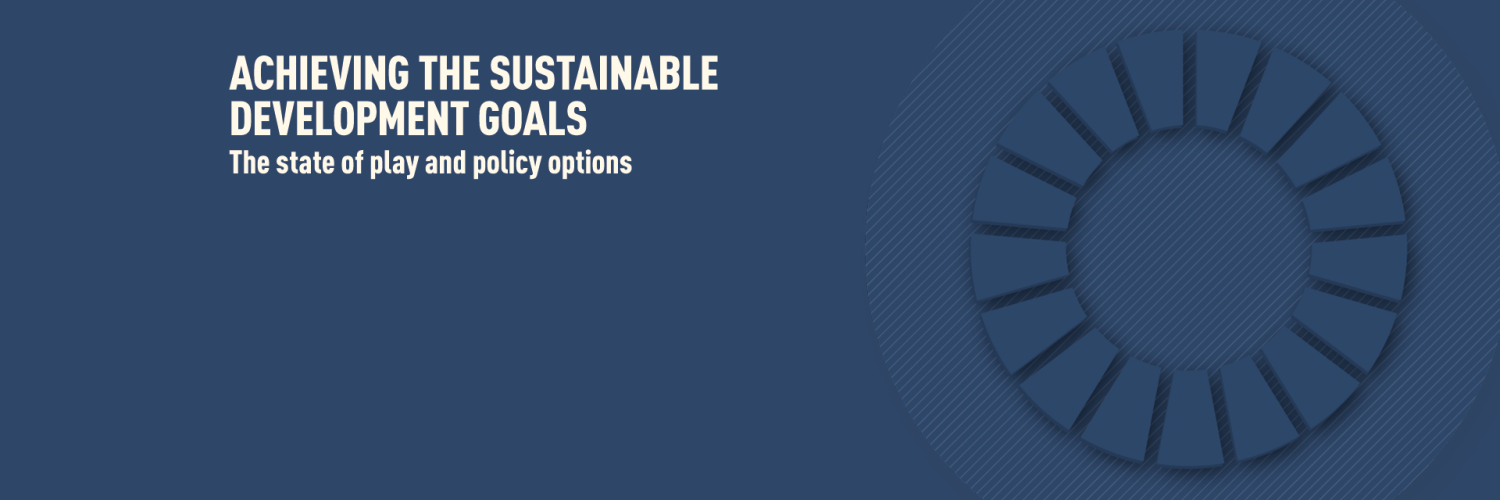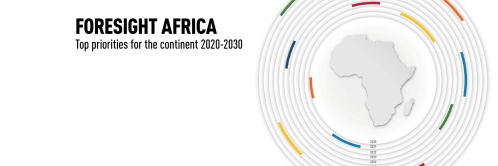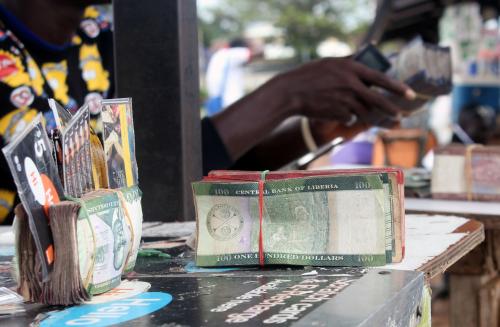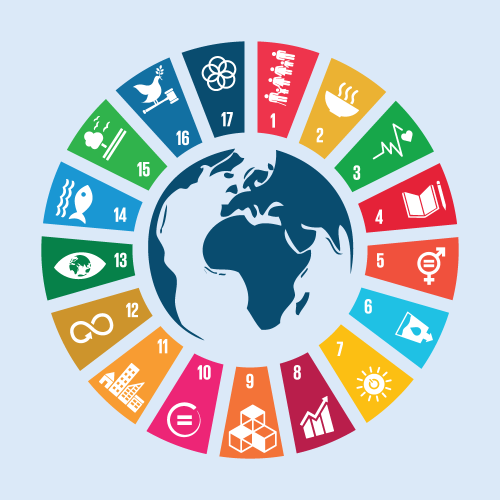Below is Chapter 1 of the Foresight Africa 2020 report, which explores six overarching themes that provide opportunities for Africa to overcome its obstacles and spur inclusive growth. Download the paper to see the contributing viewpoints from high-level policymakers and other Africa experts.

With one-third of the 2030 Agenda journey already complete, it is an opportune time to examine Africa’s progress on the Sustainable Development Goals (SDGs) so far as well as assess what adjustments to strategies are needed to overcome the remaining obstacles. The SDGs provide time-bound targets in key sectors—including health, education, employment, energy, infrastructure, and the environment—for all nations to achieve. Nowhere is the need to achieve these targets larger than in Africa. While progress in some areas and countries is encouraging, overall, the region will need to redouble its efforts if it is to achieve the SDGs by 2030. To be successful, there is need for effective and coordinated partnerships to domesticate the SDGs—i.e., to fully transpose the SDG ecosystem into national and regional planning and implementation mechanisms—as well as the African Union’s (AU) Agenda 2063, and to bridge the large financing and data gaps.
Progress so far on the SDGs has been notable but falls significantly short
Progress so far on the implementation of the SDGs has been uneven across countries, goals, and targets. According to the Africa SDG Index and Dashboard 2019, the best-ranked country, Mauritius, had an aggregate score of 66.19—implying that the country is, on average, 66 percent of the way to the best possible outcome across the 17 SDGs.1
Other top performers include Botswana, Ghana, and Rwanda. However,18 countries (of 46 total) in sub-Saharan Africa are, on average, less than 50 percent on the way towards meeting the best possible outcome on all SDGs. Overall, at the indicator level, these countries are off track on most of the SDGs, reiterating the urgency for countries and global partners to jointly accelerate reforms and implementation.
Gains in health and education show promise, but gaps linger
Notably, the under-five mortality rate for Africa (excluding North Africa) has fallen from 85 deaths per 1000 in 2015 to 76 deaths per 1000 in 2018,2 an encouraging sign, but still double the global average of 38. Neonatal deaths have also improved from 29 per 1000 to 27 per 1000 over the same period. North Africa had already reduced under-five mortality rates to fewer than 35 deaths per 1000 births by 2015, and is likely to meet the goal of fewer than 25 deaths per 1000 births by 2030. With an intensified and accelerated response, the other African regions could feasibly meet this target.3 Large-scale progress on both health and education remain a concern, though, given that most Africa countries have not carried out demographic health and national surveys over the SDG period.
The net enrollment rate for primary school in sub-Saharan Africa has increased marginally from 77.4 percent in 2015 to 77.6 percent in 2017. More than half of the countries in Africa have a primary school enrollment rate of over 90 percent and are likely to meet the target of 100 percent by 2030 if current efforts are sustained. In particular, North Africa is poised to meet the 2030 target, and the other African regions are also within range. However, the net enrollment rate for lower secondary education has fallen slightly from 28.9 in 2015 to 28.3 in 2017.
Infrastructure and service delivery improved but needs are apparent and pressing
To house and serve Africa’s young and fast-growing population—expected to increase from 1.3 billion today to over 2.5 billion by 2030—governments must address sorely needed infrastructure and service requirements quickly. There have been improvements in recent years: For example, access to clean drinking water in sub-Saharan Africa has increased from 59 percent of the population in 2015 to 61 percent in 2017. Access to electricity increased from 39.4 percent to 44.6 percent over the same period.
At the same time, African urban areas will need 565 million additional housing units between 2015 and 2030 just to keep up with rapid population growth and urbanization.4 This is about 40 million new houses per annum over that time.
Poverty and hunger persist, exacerbated by climate change
As of 2015, sub-Saharan Africa had the highest concentration of the world’s poor, with 41.3 percent of people living under the poverty line.5 An estimated 600 million people do not have access to electricity, and millions die every year from preventable diseases.6 Relentless population growth and climate change also present two major threats to continued economic progress. Thirty-one African countries need food aid, and more than 30 percent of the 830 million people worldwide suffering from inadequate food supply are in Africa.7 The prevalence of undernourishment, in fact, increased from 234.6 million in 2016 to 256.1 million in 2018.8 In addition, experts predict that a temperature change of two degrees Celsius could contribute to farmers losing 40 to 80 percent of cropland conducive to growing maize, millet, and sorghum by the 2030s-2040s.9
Main obstacles to progress
Given the complexities caused by rapid population growth and climate change, African nations must attempt to achieve the SDGs with urgency, as many of the challenges will become harder to manage if left unattended.10
Even with Africa’s enthusiasm, without a robust global and localized governance structure the SDG agenda will falter
One major reason to be hopeful for Africa’s progress is that the SDGs are in direct alignment with the African Union’s Agenda 2063—the continent’s long-term social and economic transformational blueprint for a prosperous continent. In fact, the two ambitious agendas align on over 85 percent of their goals, and African countries have shown enormous enthusiasm and endeavors in implementing the SDGs, with 90 percent of countries mainstreaming the SDGs into their national development plans.
At the same time, many weak links in the SDGs—largely due to the lack of a global governance structure—are waiting to be addressed. Despite data innovations embedded in the SDG formulation, the data gap remains wide and manifests into poor planning and, consequently, poor decision making and results. There is neither a defined reporting nor accountability mechanism, nor clarity on pathways and interventions, and little experience or scalable practice when it comes to social inclusiveness. Not much has been done in changing mindsets; we are continuing to do new things the old way. Like in decades past, key stakeholders continue to work in silos, duplicating interventions with little coordination. Finally, the world only agreed on goals and targets, leaving solutions to be developed locally.
State fragility and large financing gaps hinder progress
The continent is disadvantaged with a low starting point. Fragility—which manifests in many forms such as weak institutions and economic, political, and social insecurity—remains prevalent in parts of the region, with 80 percent of the world’s fragile states found in Africa. Despite being one of the fastest-growing regions in recent decades, 40 percent of African countries are still classified as “low income,” with a GNI per capita of below $1,025 per year.11
Financing continues to be a constraint as well. The financing gap for SDGs is large for low-income countries, estimated to be, on average, in excess of 14 percent of GDP.12 Alone, sub-Saharan Africa’s annual additional spending requirements are estimated at 24 percent of the continent’s GDP, approximately $420 billion.13 This financing gap is a sizeable challenge for many Africa countries given that, as of 2018,over 20 of the 54 African countries are either in or at a high risk of debt distress. Compounding this challenge, official development assistance, though rising overall, is declining in per capita terms, and foreign direct investment has been dwindling in recent years. Furthermore, while more than a third of the required financing for the SDGs was expected to come from the private sector, the actual contributions from the private sector so far are significantly smaller, at only 4 to 8 percent.
Looking ahead: The time for action is now
Going forward, leaders at all levels must tackle the SDGs head-on with a comprehensive and interconnected approach to effectively optimize resources. Since such an approach seeks high-level horizontal and vertical coordination, it requires persistent and logically framed action plans for ensuring synergies. The domestication process must thus go beyond just mainstreaming the SDGs into national plans; it must now strive to contextualize both the target and its indicators to local socio-economic realities. Our strategy must be changed from the conventional present-to-future to future to-present planning, cascading from 2030 backward.
Firmly determined to take its future into its own hands, Africa is growing out of adopting agendas to, instead, setting the agenda. Agenda 2063 is one mechanism for doing so. So is the African Continental Free Trade Area, which will integrate a market of 1.2 billion people with a GDP of over $3.4 trillion, creating new opportunities for Africa and its business partners. In addition, many African countries are embarking on ambitious development plans that are driving the adoption of technologies and new sources of energy. Countries are also showing a greater appetite for information technology and knowledge. While Africa should remain committed to working with its development partners over the next decade and beyond, achieving the SDGs should primarily be its own responsibility.
-
Footnotes
- The Africa SDG Index and Dashboards includes inter alia countries’ specific performance and trends for each of the 17 goals, the overall country aggregate SDG index score ranking, as well as the trend analysis showing the respective countries’ distance to achieving the SDGs. For example, if a country has a score of 100 percent, that country has attained the 2030 goals across all SDGs. Note that this score is not reflective of progress since 2015, the SDG inception year. In other words, countries did not start 2015 with a score of zero.
- “Under-five mortality rate—Total”, United Nations Inter-Agency Group for Child Mortality Estimation, 2019, https://childmortality.org/data.
- Enock Nyorekwa Twinoburyo et al., Africa 2030: Sustainable Development Goals Three-Year Reality Check (Kigali: Sustainable Development Goals Center for Africa, 2019).
- Afdhel Aziz, “The Power of Purpose: Unlocking Africa’s $10 Trillion Opportunity in Housing,” Forbes, September 12, 2019.
- “PovcalNet,” World Bank, October 29, 2019.
- “Electricity for All in Africa,” Sustainable Energy for All, accessed December 2, 2019.
- Food and Agriculture Organization of the United Nations et al., The State of Food Security and Nutrition in the World: Safeguarding Against Economic Slowdowns and Downturns (Rome: Food and Agriculture Organization of the United Nations, 2019).
- Ibid.
- “What Climate Change Means for Africa, Asia, and the Coastal Poor,” World Bank, June 19, 2013.
- Eve de la Mothe Karoubi et al., 2019 Africa SDG Index and Dashboards Report (Kigali: Sustainable Development Goals Center for Africa, 2019).
- “GNI per capita, Atlas method (current US$),” World Bank, accessed December 2, 2019, https://data.worldbank.org/indicator/NY.GNP. PCAP.CD.
- Vitor Gaspar et al., “Fiscal Policy and Development: Human, Social, and Physical Investments for the SDGs,” IMF Staff Discussion Notes 19/03 (2019).
- Twinoburyo et al., Africa 2030.








